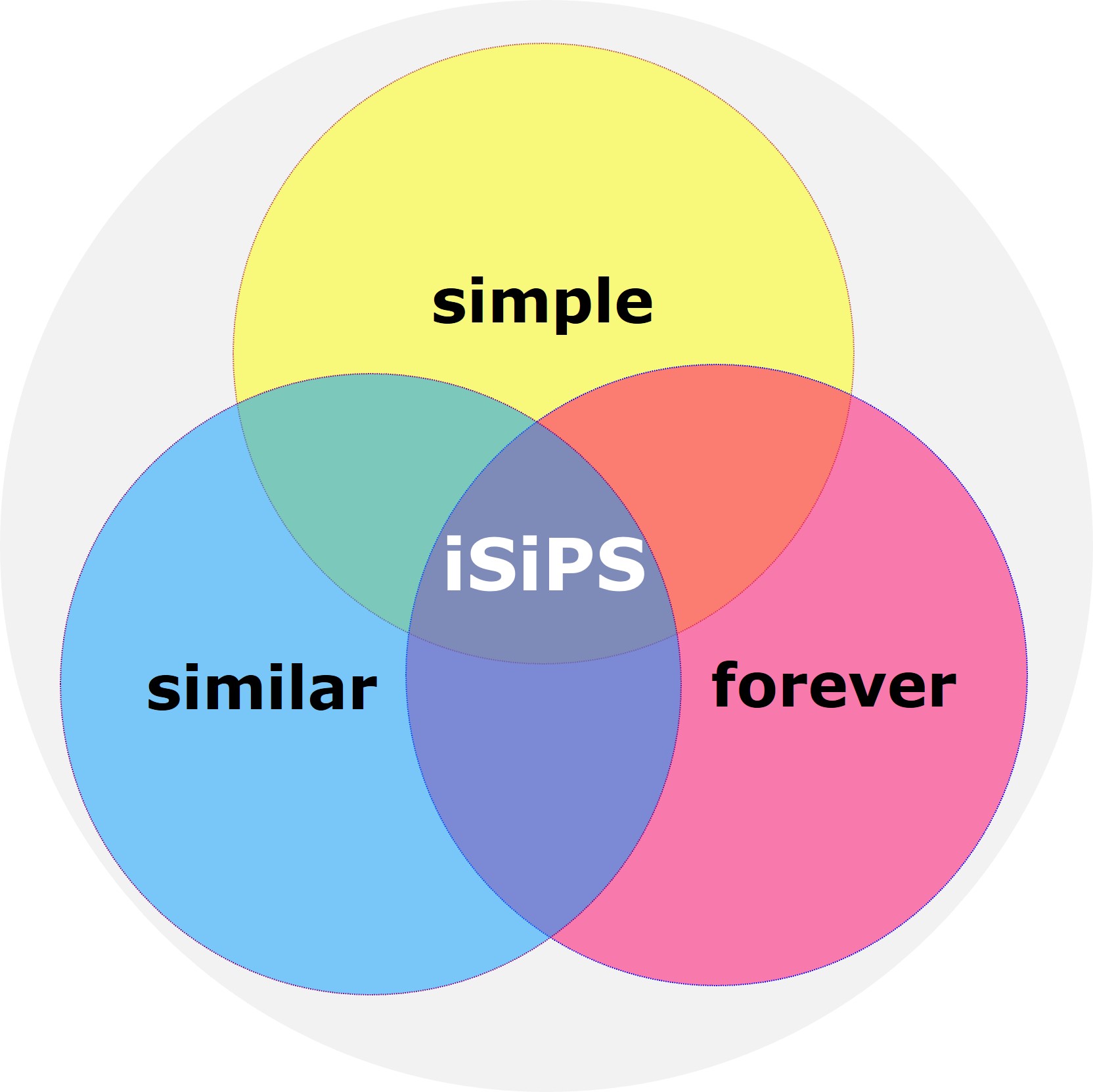iSiPS Testimonials/Case Reports
iSiPS Testimonials/Case Reports gives you shining examples of how iSiPS has been, and can be, therapeutically -curatively- applied in an individualized manner.
Testimonial: a formal written statement about the quality of something.
Therapeutics: (in broad terms) the branch of medicine concerned with the treatment of diseases. (In the narrowest sense) ‘therapeutics” ought to be concerned with the healing treatment of zarapiá ‘the itch disease’, “the psora” (Hahnemann).
The noun ‘therapy’ (< Greek therapeía) comes from Iberian Rommany zarapiá ‘the itch disease’ and ‘leprosy’, from which also the Greek psora ‘itch disease’ arises. It’s well worth saying that the Hebrew tzaraat ‘itch diease, leprosy’ is a dissimilation of the Ieerian Romamny zarapiá too. The itch disease and leprosy are considered the human being’s archetypal conditions.

ISiPS Testimonials/ Case Reports only refer to individual (chronic) cases with long-term follow-up, on the road to certain healing, since having administered a single photodynamic homœopathic simpleness, as sole therapeutic variable, and often after the previous failure of other apparently well indicated ones.
individual < indivisible: that cannot be divided into separate parts.
individual noun: a person considered separately rather than as part of a group; a person who is original and very different from others.
individualize: to make something different to suit the needs of a particular person, place, etc.
Pure, perfectly simple Homœopathy is being supplanted by pseudo-homeopathy. Homœopathy is being attacked, marginalized and silenced. Pure, perfectly simple Homœopathy is being ‘annihilated legally’ for the sole real reason that it’s not lucrative/ patentable, even though it’s really curative/ sanative of individual cases of chronic disease, in a predictvely certain, and maximally efficient manner.
Such attacks, such legal annihilation of pure , perfecttly simple Homœopathy is on the pretext of lacking a scientific basis, of lacking a believable molecular, nanoparticular scientific explanation for the mechanism of action of potentized/dynamized homœopathic active principles.
A pretext, a subterfuge according the still prevailing false, materialistic views concerning the origin and essential nature of diseases.
Moreover, pure, perfectly simple Homœopathy is now largely discredited among scientists because its individual (chronic) unique cases cannot obviously be object of statistical treatment.. Although staticians mesure and gather data of individuals of a sample, no statistic has any application to an individual, to a unique individual case of disease.
Therefore, according the current standards of scientificity, individual case reports (case reports) are considered the lowest level of the evidence pyramid!
Evidence: the facts, signs or objects that make you believe that something is true; the information that is used in court to try to prove something.
Inherent simpleness in the principle of similitude (iSiPS) is the very foundation of all evidence!
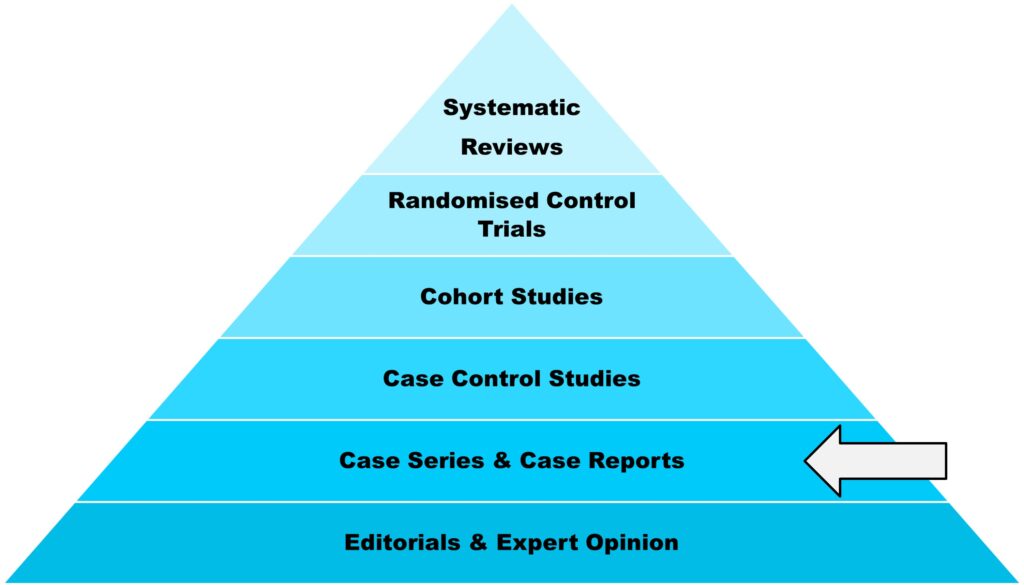
Case reports are considered the lowest level of evidence, but they are also the first line of evidence, because they are where new issues and ideas emerge. This is why they form the base of the evidence pyramid. A good case report will be clear about the importance of the observation being reported.
If multiple case reports show something similar, the next step might be a case-control study to determine if there is a relationship between the relevant variables.
- Design pitfalls to look out for
- The patient should be described in detail, allowing others to identify patients with similar characteristics.
- Case reports should include carefully recorded, unbiased observations.
- Case reports should explore and infer, not confirm, deduce, or prove. They cannot demonstrate causality or argue for the adoption of a new treatment approach.
This information on Case Reports has been randomly selected.
Source: George Washington University (2023).
Case Reports
A case report is an article that describes and interprets an individual case, often written in the form of a detailed story. Case reports often describe:
- Unique cases that cannot be explained by known diseases or syndromes
- Cases that show an important variation of a disease or condition
- Cases that show unexpected events that may yield new or useful information
- Cases in which one patient has two or more unexpected diseases or disorders.
Advantages
- Can help in the identification of new trends or diseases
- Can help detect new drug side effects and potential uses (adverse or beneficial)
- Educational – a way of sharing lessons learned
- Identifies rare manifestations of a disease
Disadvantages
- Cases may not be generalizable
- Not based on systematic studies
- Causes or associations may have other explanations
- Can be seen as emphasizing the bizarre or focusing on misleading elements
Case Series
A report about a small group of similar cases.
The “discrowned” human being’s model resulting from progress of reductionism, and lacking in iSiPS awareness.
“Behold, the Primary Source of all love only disinherited man of the animal nature in order to endow him all the more richly with that spark of divinity, a spirit [Geist], which enables man to elicit from himself the satisfaction of all his requirements, and a full measure of all conceivable benefits, and to develop from himself the innumerable advantatges that exalt the children of this earth far above every other living thing ─ a spirit that, indestructible itself, its capable of creating for its tenement, its frail animal nature, more powerful means for its sustenance, protection, defence and comfort, than any of the most favoured creatures can boast of having derived directly from nature.
The Father of mankind has chiefly reckoned on this energy of the human spirit to discover auxiliary aids, succours, for his protection from the maladies (illnesses) and disorders to which the delicate organism of man is exposed.”
Hahnemann S, Healing Technique of Experience [Heilkunde der Erfahrung], 1805.
“The spirit is the superior portion of the soul that has respect and communication with God.”
Saint John of the Cross (1542-1591), Ascent of Mount Carmel, 3S, 26, 4.

Progress of reductionism ─ Little by little, philosophy eliminated religion (rationalism, the Age of Enlightenment, etc.); after which psychology eliminated both (fashion for Freudianism); finally physiology in turn eliminates psychology (the ills of the soul are treated with chemistry) ─ truth from below: the only verifiable one; the higher one goes, the more the truth demands faith…
Gustave Thibon, L’illusion féconde, 1995
Lack of iSiPS awareness biases graduates’ and postgraduates’ logic, reasoning, decision-making and medical practice. Lack of iSiPS awareness makes them erroneously believe that all disorders, conditions, and diseases must be treated materially and enantiopathically (contraria contrariis)!
- The spirit is the subject of all experience.
- The spirit is the subject of knowledge.
- The (spiritual, personal) experience is the mould of science.
- iSiPS is the very foundation of all evidence!
- iSiPS is the single foundation of science!
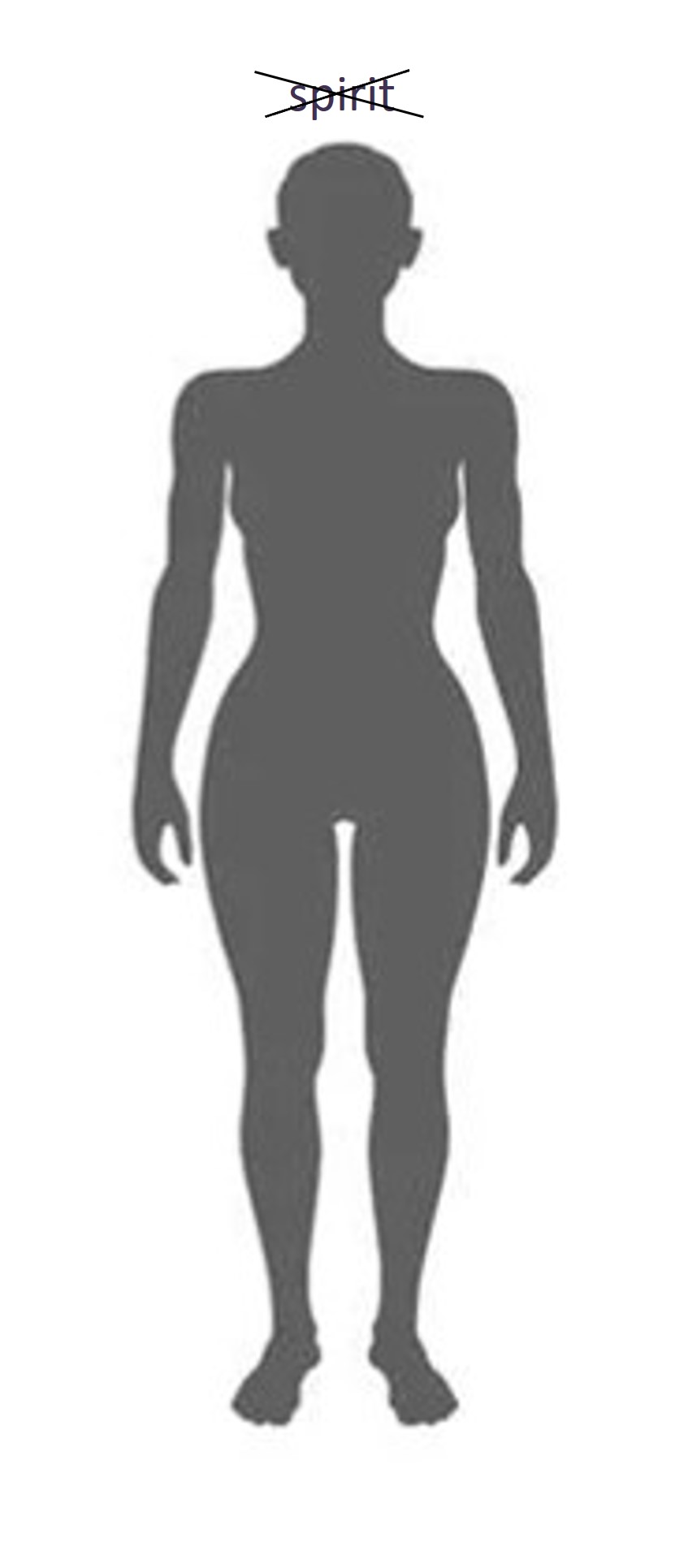
- A “discrowned” human being’s model denotes, indicates:
- alignment with the material palliative enantiopathic (contraria contrariis) dogma of the pre-scientific old school and the current biomedical paradigm;
- false and materialistic views concerning the origin and essential nature of diseases;
- MATERIAL EVIDENCES ONLY, the only verifiable ones, e.g. the microbe-centric view if microbial pathogenicity;
- breakdown, fragmentation of man’s bio-material dimension into apparatuses, organs, systems, specialities and specialists;
- spurious experimentation of material medicinal compound products on sick people (ab usu in morbis);
- several nosographical diagnoses (comorbidity) at the same time on an individual;
- several concurrent material molecular therapeutic targets on the same individual;
- several concurrent enantiopathic -palliative only- material medicinal products [polypharmacy] on the same individual;
- systematic iatrogenesis;
- predictive uncertainty;
- absolute therapeutic inefficiency:
- systematic waste of resources;
- and complete unawareness of :
- the paramount importance and transcendence of photodynamic simpleness as fundamental principle of the existence and of all things, especially regarding the issue of the mathematicaliy of nature;
- the impressive actuality of inherent simpleness in the principle of similitude (iSiPS) in cosmos, universe, nature, science, and all domains of human life;
- iSiPS as the supreme Law of the existence;
- 1, the numeral sign/symbol that represents one, the “number” 1, which it is not a number properly, because it contains and generates all numbers!;
- generative (reversible) transformation of analogical¦ energetic units, single entities: energy – light – matter – life;
- immune photohomœorhesis of living systems;
- simpleness of the spirit;
- the spirit as the subject of all experience and knowledge;
- human being’s life¦spirit unity;
- iSIPS as the firm basis and single foundation of the scientific method (of each one of its steps);
- the starting point of illness;
- the dyshomœorhetic¦semiotic unity of every individual case of disease;
- pure experimentation on healthy individuals only;
- photodynamic simpleness (dynamization/potentization of analogy¦energy units) [Hahnemann];
- photodynamic experimental, semiotic, diagnostic¦ therapeutic simpleness, the ABC of the Technique (applied Science) of healing;
- the most minute individualisation of every case of disease;
- the Law of cure by individualized photodynamic semiotic similarity;
- a photodynamic homœopathic simpleness, as sole therapeutic variable, indicated to a given phase of an individual case of disease;
- the photodynamic superposition -overimpression- therapeutic effect at the starting point of illness;
- curing every individual case of disease in a predictively certain and maximally efficient manner;
- the supreme scientificity of individual (chronic) cases of disease, with a long-term follow up, on the certain way to healing since having administered a photodynamic homœopathic simpleness, as sole therapeutic variable, and often after the previous failure of other apparently well indicated ones.
Remember,
A weaker dynamic affection is permanently extinguished in the living organism by a stronger one, if the latter (whilst differing in kind) is very similar to the former in its manifestations.
Hahnemann, Org 2-6, 5-6 § 26
The supreme scientificity of iSiPS Testimonials, and of iSiPS Case Reports.
- Acute illnesses are mostly exacerbations of latent or patent (blatant) chronic conditions. They are acute-on-chronic-conditions. Acute diseases can occur throughout all body systems. Acute illnesses generally develop suddenly and last a short time, often only a few days or weeks. Therefore, acute conditions as such have always the tendency to regress toward the mean, i.e., to get better by themselves (and without a specific treatment).
- However, many times acute diseases turn chronic if they continue to persist.
- Chronic conditions develop slowly and may worsen over an extended period of time ─ months to years, Chronic cases are the true touchstone of a genuine healing art and technique [Heilkunst].
- Therefore, iSiPS Testimonials and iSiPS Case Reports will always refer to chronic cases with a long-term follow-up, or to acute cases that turn chronic.
- Will will refer to the supreme scientificity of individual (chronic) cases of disease, with a long-term follow-up, on the road to certain healing since having administered a photodynamic homœopathic simpleness, as sole therapeutic variable, and often after the previous failure of other apparently well indicated ones.
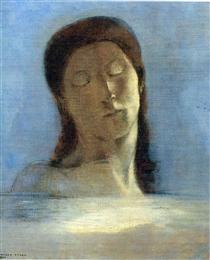
Why do iSiPS Testimonials distinguish themselves by their supreme scientificity?
Because:
- Testimonials’ spirit is the subject of the iSIPS experience, and, therefore, the subject of knowledge.
- Testimonials’ spirit explains his/her experience with first-hand materials (own -objective- signs and -subjective-symptoms).
- Therefore, testimonials’ spirit is the only subject that can exoress the comprehensible and clearly perceptible manifestations of disease, i.e., the symptoms that so plainly address themselves to us as object of healing.
Science (in narrow sense) is the knowledge about the structure and behaviour of the natural and physical world, based on facts that you can prove, for example by experiments.
In broad sense, science mainly denotes any systematical knowledge that is organized by an internal theoretical principle.
Scientificty is such an internal theoretical principle!
The concept of scientificity consists of two parts:
1. the systematicity, logicality, certainty and precision of knowledge, i.e., a theory system with consistent content and form; and
2. a kernel of truth that can truly reveal the essence of research object at certain levels.
Scientificity is certainly related to truth, but its truth is not depended on theory but must be verified and developed by practice. Moreover, it must reveal the kernel of truth in a systematical, logical, and precise theoretical form.
Source: Xu Z-L, Science and Scientificity (2005)
Inherent simpleness –truth- in the principle of similitude (iSiPS), the generative force governing the likeness of single entities, and their attractions and transformations, is such an internal theoretical principle! This is the reason why we argue that iSiPS, as single foundational principle, is the single foundation of science!
In practice, pure, perfectly simple Homœopathy is the individualized therapeutic application of inherent simpleness in the principle of similitude (iSiPS). In the light of iSiPS we may explain the supreme scientificity of pure, perfectly simple Homœo-pathy, and of iSiPS Testimonials/Case Reports successfully and for the first time!
The supreme scientificity of pure, perfectly simple Homœopathy in the light of inherent simpleness in the principle of similitude (iSiPS)
analogical¦energetic simpleness -unity- (Æi) of species
- Æis (reversible) generative transformation: energy » light » matter » life
- Æis photo-dynamization/potentisation (Hahnemann): photodynamic simpleness
human being’s
life¦spirit simpleness -unity-
- starting point of illness < entropic energy
- human being’s untuned immune photohomœorhesis
for the sake of experimental and therapeutic efficiency!

A. Photo-dynamic experi-mental simpleness (on the healthy individual)
- pure experimentation of dynamized analogical¦energetic unities (Æis)
- experimental dyshomœorhetic¦ semiotic unity (xdŒsi)
- reliable Summa of Pure Semiotics
for the sake of experimental semiotic certainty, efficiency and reproducibility!
a certainty you can rely on!
certainty is equivalent to reliability!

“In nonvenereal chronic diseases, therefore those most usually arising from psora, one often needs to use several antipsoric healing means [Heilmittel] in succession to bring about a cure, every successive one being homœopathically chosen in consonance with the group of symptoms remaining after the previous one has completed its action.”
Hahnemann, Org 4-6, 5-6 § 171
Photodynamic simpleness; its individulaized therapeutic application:
the ABC (basic facts) about pure, perfectly simple Homœopathy
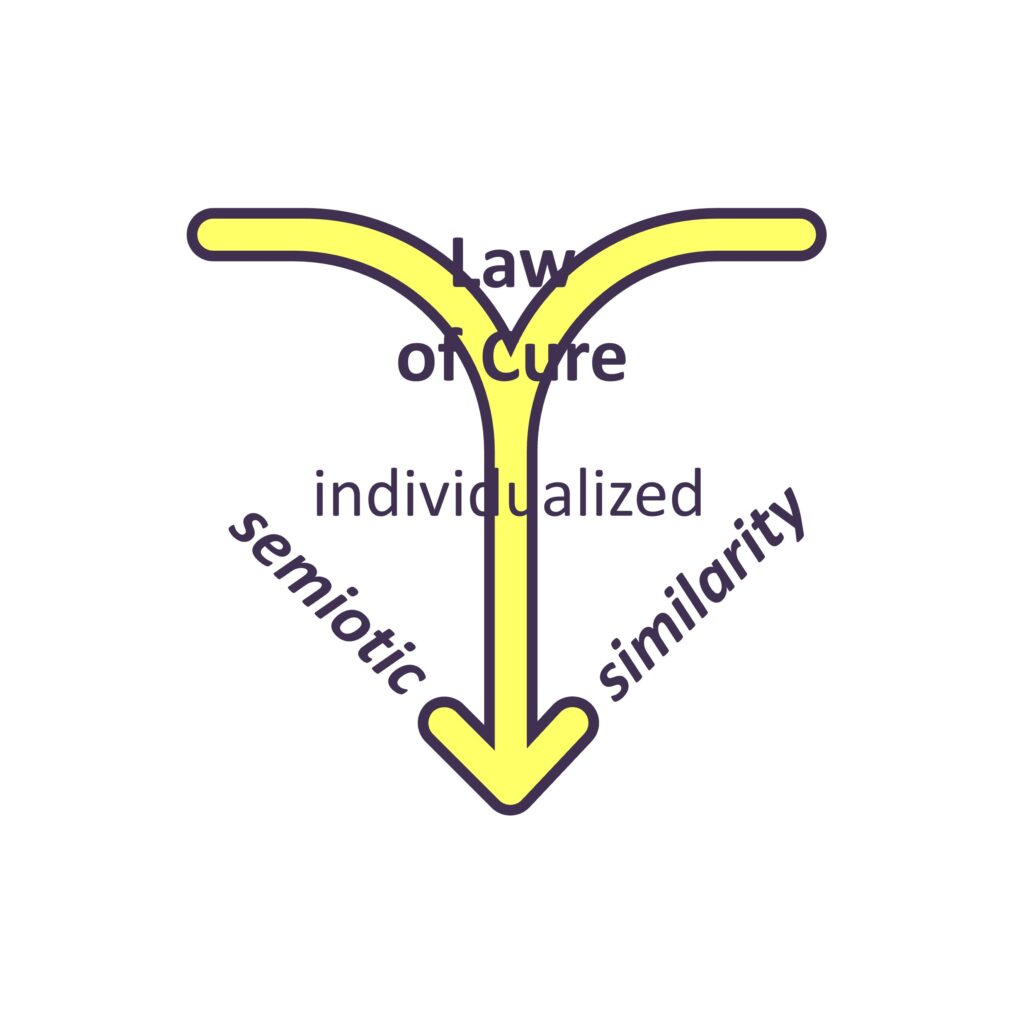
A weaker dynamic affection is permanently extinguished in the living organism by a stronger one, if the latter (whilst differing in kind) is very similar to the former in its manifestations.
C. Photo-dynamic diagnostic¦ therapeutic simpleness

for the sake of most exact, precise therapeutic -curative- effectiveness and efficiency!
“The highest ideal of cure is rapid, gentle and permanent restoration of the health, or removal and annihilation of the disease in its whole extent, in the shortest, most reliable, and most harmless way, on easily comprehensible grounds.”
Hahnemann, Org 1-6, § 2

B. Photo-dynamic semiotic simpleness (individual case of disease)
- most minute individualisation -anamnesis/physical examination-
- natural dyshomœorhetic¦ semiotic unity (dŒsi)
- reliable personal clinical history (a record of information about a person’s health)
for the sake of clinical semiotic certainty and simpleness!

Summary:
- Reasons for the supreme scientificity of pure, perfectly simple Homœopathy, and of iSiPS Testimonials:
- pure, perfectly simple Homœopathy -and iSiPS Testimonials- arise out of and stand upon inherent simpleness in the principle of similitude (iSiPS), the generative force governing the likeness of single entities, and their transformations. ISiPS explains and it is:
- the supreme Law of the existence, simple · forever · similar;
- the sole solid foundation of the ubiquitous and universal phenomenon of analogy/likeness/similitude;
- the firm basis of the generative transformation of analogical¦energetic unities (Æis) of species: energy »« light »« matter »« life, i.e., the photodynamic basis of cosmos, universe, nature, and life;
- the firm basis of the immune photohomœorhesis of living systems;
- the firm basis of human being’s life¦spirit unity, the subject of all experience and knowledge;
- the starting point of illness;
- the photodynamic origin and essential nature of disease: photodynamic dyshomœorhetic¦semiotic unity of every individual case of disease;
- the single foundation of science (of every step of the scientific method).
- photodynamic simpleness resulting from Æis photodynamization/potentisation (Hahnemann) is the firm basis of experimental (efficacious) and therapeutic (effective) efficiency, and of its individualized therapeutic application, that is, the ABC of pure, perfectly simple Homœo-pathy -and iSiPS Testimonials- :
- A. photodynamic experimental simpleness, resulting from pure experimentation on healthy individuals only, whose results are collected as raw experimental data in a reliable Summa of Pure Semiotics. It is the firm basis of experimental semiotic certainty, eficiency and reproducibility;
- B. photodynamic semiotic simpleness, the firm basis of clinical semiotic certainty and simpleness, resulting from the most minute individualisation of individual cases of disease;
- C. photodynamic diagnostic¦therapeutic simpleness, the application of the Law of cure by individualized semiotic similarity on every individual case of disease. It’s the firm basis of predictive certainty amd therapeutic efficiency, i.e., of the most exact, precise therapeutic -curative- effectiveness and efficiency;
- obviously, the Law of cure by individualized semiotic similarity is observable, repeatable, experimentally testable [experimental testability is a necessary condition that makes empirical theories scientific!], and verifiable. It rules a therapeutic fact, i.e., a natural phenomenon: “a weaker dynamic affection is permanently extinguished in the living organism by a stronger one, if the latter (whilst differing in kind) is very similar to the former in its manifestations.” [Hahnemann, Org 2-6, 5-6 § 26];
- photodynamic homœopathic simpleness is the noun phrase that categorizes every specific analogy¦energy mediatory unity (Æmi) indicated to a given evolutive phase of an individual case of (chronic) disease, by means of individualized semiotic similarity, as a single and sole therapeutic variable. It summarizes the individualized therapeutic application of photodynamic simpleness, that is, of inherent simpleness in the principle of similitude (iSiPS), that permits us to cure every individual (chronic) case of disease in a predictably certain and maximally efficient manner (on the understanding that its cure is still possible).
- photodynamic therapeutic superposition -overimpression- effect at the starting point of illness. It is so because the indicated photodynamic homœpathic simpleness is a specific electro-magnetic frequency physically that must be semiotically very similat to, but more intense -higher wave amplitude- than, the one caused and emitted by the starting point of illness. In such a manner it causes a phase and amplitude modulation at the starting point of illnes that extinguishes its entropic electromagnetic emission gradually. As a result, the dynamically untuning of sick man’s immune phothomœorhesis ceases gradually. In such a manner the individualized therapeutic application of photodynamic simpleness explains “the therapeutic mechanism of action of Homœopathy” photodynamically, simply and successfully. Importantly, the optical superposition effect (of amplitudes and phases) at a photo detector (sensor) is an experimentally testable and reproducible phenomenon (Roychoudhuri Ch).
- as if all this were not enough, the individualized therapeutic –homœopathic– application of photodynamic simpleness is the most appropriate, convenient and logical means to restore the integrity and to optmize the efficiency of sick individual’s immune photohomœorhesis, the firm basis of health and resilience!
- last but not least, with reference to iSiPS Testimonials, it’s worth noting that their life¦spirit unity is not only the subject of their personal experience, but also the subject of their first-hand materials, the sensible and manifest representation of the disease, the clinical semiotic, the symptoms and signs, that so plainly address themselves to us. The supreme scientificity of iSiPS Testimonials, reported by the same subjects of the experience, refers only to those individual (chronic) cases of disease, with a long-term follow-up, on the road to certain healing, since having administered a photodynamic homœopathic simpleness, chosen by individualized semiotic similarity, as sole therapeutic variable, often after the failure of other apparently well indicated ones.
- pure, perfectly simple Homœopathy -and iSiPS Testimonials- arise out of and stand upon inherent simpleness in the principle of similitude (iSiPS), the generative force governing the likeness of single entities, and their transformations. ISiPS explains and it is:
“It is therefore to be known that, according to the rule of philosophy, all means must be proportionate to the end, that is: they must have some convenience and similarity to the end, such that it is enough and sufficient for the intended end to be achieved through them.”
Saint John of Cross, 1542-1591, Ascent of Mount Carmel, 2 S, 8, 2.
Important:
Although, in the light of inherent simplenes in the principle of similitude (iSiPS), the supreme scientificity of pure, perfectly simple Homœopathy is absolutely uncontroversial, pure, perfectly simple Homœopthy is not yet accepted as scientific empirical theory by the scientifiic community of the time, mainly on the pretext of not satisfying the (material) demarcation criteria of the method employed at the time!
It’s really paradoxical that the Healing Technique (applied Science), i.e., pure, perfectly simple Homœopathy, taught by Hahnemann is not accepted as empirical practical scientiic theory, because it is experimentally and clinically testable, and the experimental testability of theories is a necessary condition that makes empirical theories scientific. Moreover, as individualized therapeutic application of inherent simpleness in the principle of similitude (iSiPS), it permits us to heal every individual case of (chronic) disease in a predictively certain, maximally efficient and reproducible manner (on the underestanding that it is still possible).
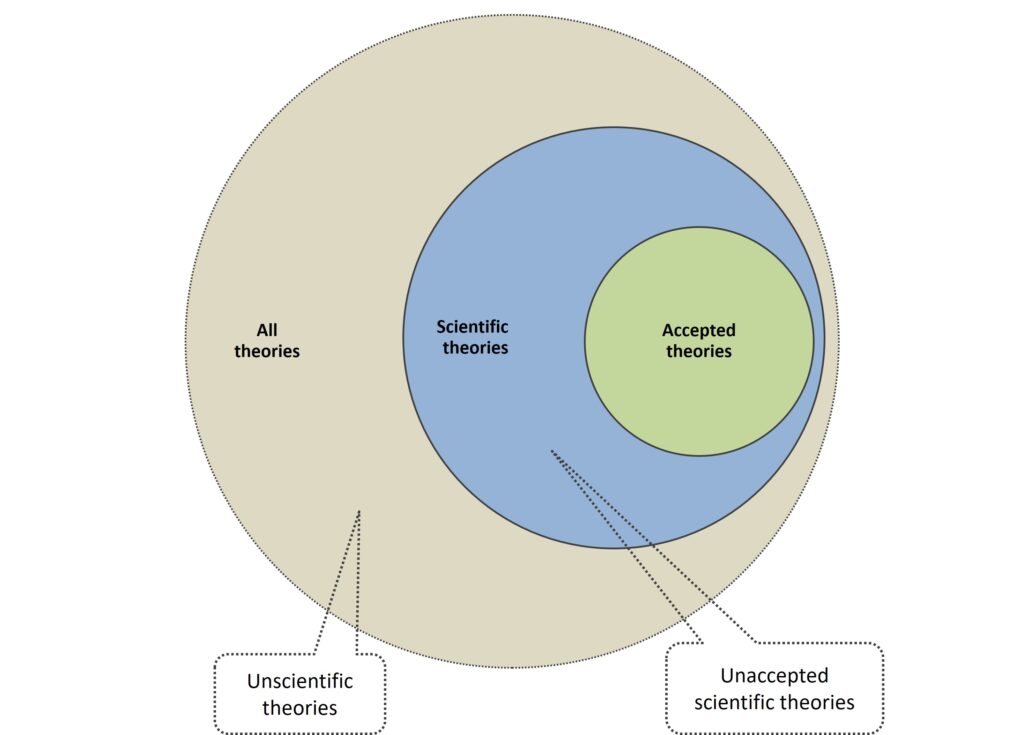
Nevertheless, in the era of photonic sciences, and in the light of inherent simpleness in the principle of similitude (iSiPS), such a lack of acceptance will change positively in the medium/long term, mainly with the coming of acquaintance on scientific community’s part with photodynamic simpleness, and its individualized therapeutical application: experimental, semiotic, diagnostic¦therapeutic for the sake of efficiency! Such a pedagogic task, that is, filling in the major knowlegde and incomplete information gap existing in university education, in general, and in medical education and training, in particular, is precisely the pioneering mission that Simple · Forever · Similar, as Independent non-profit Educational Organization is carrying out.
It’s worth noting that the acceptance (or lack thereof) of a theory, of the scientificty of an empirical theory, such as the Technique (applied Science) of Healing, pure, perfectly simple Homœopathy, has important practical and pedagogical implica-tions such as whether or not the theory should be included into the textbooks and university curricula.
Obviously, the reluctance on the part of scientifiic community as well as on the part of science funding agencies to accept the supreme scientificity of pure, perfectly simple Homœopathy as applied Science of Healing does not have to do with the question scientificity, but with economics. To put it in a nutshell, pure, perfedty simple Homœopàthy is not lucrative/patentable! It is of no interest to the technocratic-biomedical capitalism, in alliance with the States, at all.
Scientific photodynamic diagnostic¦therapeutic simpleness
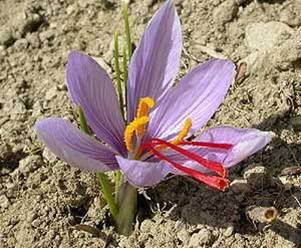
“In no case under treatment is it necessary and thereof not permissible to administer to a patient more than one single, simple analogical¦ energetic substance [Arzneisubstanz] at one time. It is unconceivable how the slightest doubt could exist as to whether it was more consistent with nature and more rational to prescribe a single, simple, well-known analogy¦energy stuff [Arzneistoff] at one time in a disease or a mixture of several differently acting ones. It is absolutely not allowed in Homœopathy, the one true, simple and natural art and technique of healing [Heilkunst], to give the patient two different analogical¦ energetic substances [Arzneisubstanzen] at any one time.”
Hahnemann, Org 6 § 273
“As the true healing artist [Heilkünstler] finds in simple analogy¦energy units [Arzneien], administered singly and uncombined, all that he can possibly desire (artificial disease-forces which are able by homœopathic power completely to overpower natural diseases, extinguish them in the feelings of the vital principle, and permanently cure them), he will, mindful of the wise maxim that “it is wrong to attempt to employ complex means when simple means suffice,” never think of giving as healing means [Heilmittel] any but a single, simple analogy¦energy stuff [Arzneistoff] at a time; for these reasons also, because even though the simple analogy¦energy units [Arzneien] were thoroughly proved with respect to their pure peculiar effect on the unimpaired healthy state of man, it is yet impossible to foresee how two and more analogy¦energy stuffs [Arznei-stoffe] might, when combined, hinder and alter each other’s action on the human body; and because, on the other hand, a simple analogy¦energy stuff [Arzneistoff] when used in diseases, the totality of whose symptoms is accurately known, renders complete aid by itself alone, if it be homœopathically selected;…”
Hahnemann, Org 1-6, 5-6 § 274
Examples of iSiPS Testimonials/Case Reports
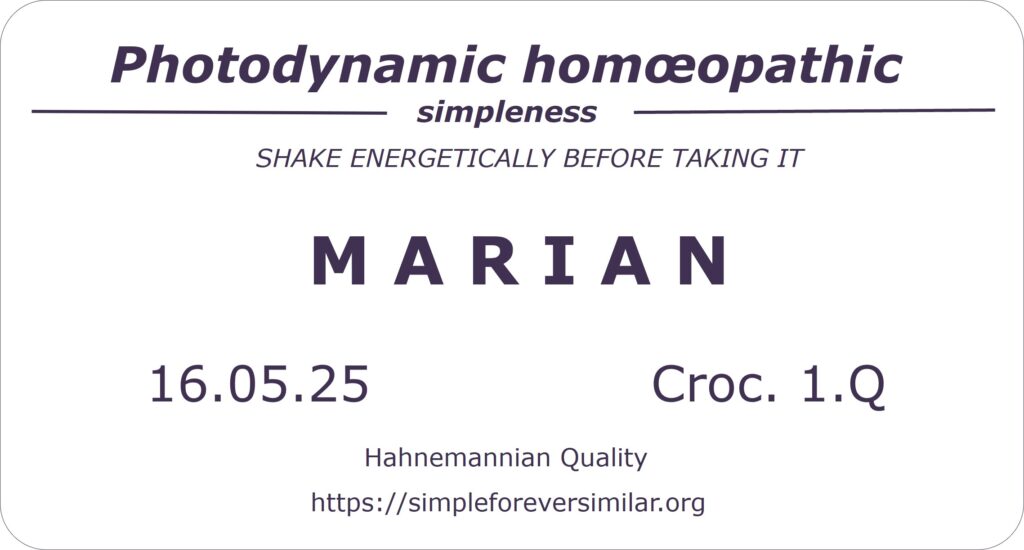
Since Hahnemann‘s foundation of Homœopathy as healing Technique (applied Science) [Heilkunst] in 1810 many individual (chronic) cases of disease have been healed homœopathycally in a predictively certain and maximally efficient manner around the world.
However, it is well known that only few of these alleged homœopathically cured (chronic) cases have been duly reported, so as to be able to ascertain which therapeutic variable had been the real therapeutic agent of such a cure. This is an important issue, because of the widespread custom of combining several concurrent therapeutic variables on the same patient.
Most regrettably, the growing trend towards practicing homeopathy as a complementary, alternatve therapy in the bosom of the so called “integrative medicine” subordinated to dominating enantiopathic (contraria contrariis) dogma, and to its “discrowned” human being’s model, not only betrays Hahnemann’s scientific legacy, but it makes any evidence of homeopathic efectiveness absolutely impossible to proof, in the midst of several therapeutic variables. Obviously, this phenomenon of spurious, unscientific pseudo-homeopathic practice is at the expense of predictive certainty, therapeutic efficiency, and possibility of learning pure, perfectly simple Homœopathy, as healing Technique (applied Science), and of contributing to its necessary perfection.
Therefore practising and teaching pure, perfetctly simple Homœopathy, and advocating its supreme scientificity, especially in the light of iSiPS, is an epistemological duty nowadays.
Exemplar, teachable iSiPS Testimonials and Case Reports ought to contribute to illustrate it.
This is the reason why we are willingly to publish several iSiPS Testimo-nials/Case Reports on this Page!
They will come soon!
Thank you very much for your understanding!

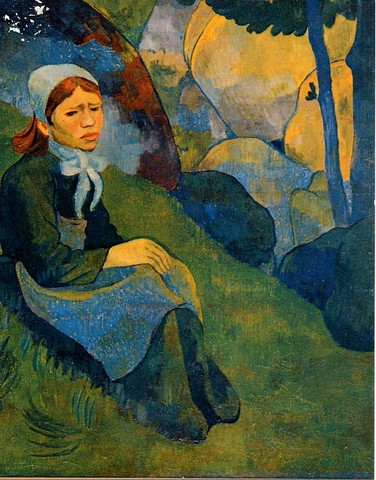
The conversion of a botanist to Homœopathy.
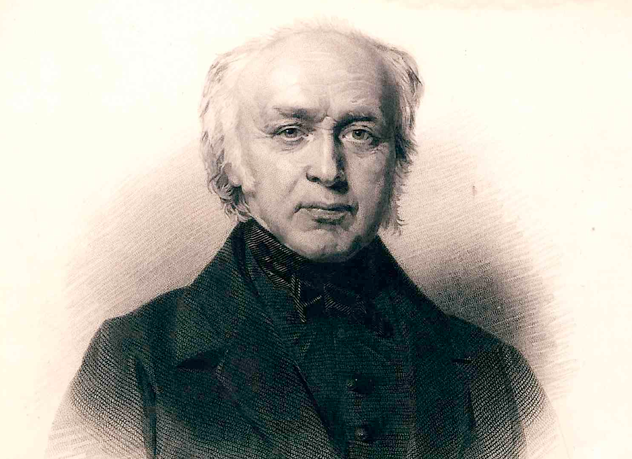
Clemens Maria Franz, Baron von Boenninghausen, Doctor of Civil and Criminal Laws and of Medicine, was born March 12, 1785, on the ancestral estate of Heringhaven in Overyssel, a province of the Netherlands.
His ancestors. whose names and arms may be traced back into the thirteenth century and one of whom was made an Austrian Field Marshal by Ferdinand II., in 1632, belonged to the oldest nobility of Westphalia and the Rhine.
Inasmuch, however, as for three hundred years past, they had devoted themselves exclusively to the profession of arms, their property always remained quite moderate in amount.
Von Boenninghausen’s early youth was passed in the country, where his bodily vigor was fostered by riding, swimming, hunting and other manly exercises, while his mental faculties were but sparingly cultivated.
When, therefore, in his twelfth year he entered the high school in Münster (Rhineland Westphalia, Germany) he found his place at the foot of his classes. But his diligence during the first half year was so great that, at the end of that period he had reached the head, a position he always retained.
After remaining six years at this school, von Boenninghausen went to the University of Groningen (the Netherlands), where he spent three years, devoting himself not only to the studies proper to the profession of law, to which he intended to devote himself but also, and with great zest, to the study of Natural History and of Medicine.
On the 30th of August, 1806, he received the degree of Doctor of Civil and Criminal Laws, and about the 1st of October in the same year he began his career as advocate.
This career was destined to be brief. In August, 1807, von Boenninghausen accompanied his father to Utrecht (the Netherlands), whither the latter was sent as delegate from the Electoral Committee of Overyssel to the then king of Holland, Louis Bonaparte (father of Napoleon III) who at that time. resided at Utrecht.
Being more familiar with the French language than his companions, the young von Boenninghausen was admitted to the audience to act as interpreter. In consequence of this circumstance he soon received the quite unexpected appointment of Auditor to the State Council.
From this time on, his career at the Court of Holland was a remarkably rapid one.
Within a year he was promoted over the heads of some colleagues much older than himself, to the post of Auditor to the King, and a fortnight afterwards to that of Secrétaire général des requêtes.
This laborious but influential office, to which were subsequently added the duties of royal librarian and chief of the topographical bureau, he continued to hold until the abdication of the King of Holland, July 1, 1810.
After the loss of his very kind and benevolent chief, of whose council he was the youngest member, under circumstances so very painful to him, von Boenninghausen declined every position that was offered him in the service of Holland, and returned in 1810 to the paternal estate to devote himself to the study of agriculture and of the auxiliary sciences, especially that of botany, which gradually became his favorite pursuit.
He married in 1812, and in 1814 removed to his inherited estate of Darop.
Here he gradually entered into correspondence with the most prominent agriculturists of Germany, especially with Thaer and Schwerz. Several essays from his pen appeared in the Moglischen Annalen.
He endeavored by advice and example to improve the agriculture of Westphalia. Among his efforts of this kind was the founding of the Agricultural Society for the district of Munster, which still exists in a more extended form and which was the first association of the kind in the western part of the Prussian Monarchy.
On the organization of the Prussian provinces of the Rhine and Westphalia in 1816, the position of Landrath for circle of Coesfeld, in which his estate of Darop lies, was offered to von Boenninghausen.
He accepted it and filled it until 1822. During this period the necessity of an appraisement of the two above-named provinces of the Rhine and Westphalia was recognized, and von Boenninghausen being the only Landrath, was summoned to the conferences held on the subject at Godesburg, near Bonn, in order that he might testify, as both a theoretically and practically educated agriculturist, on the technology of the appraisements.
He was subsequently, in 1822, appointed General Commissioner of Appraisements for the two provinces.
This new office involved almost constant traveling about in these provinces ; but this, again, gave him increased opportunities for the study of their flora.
He published in 1824 a “Prodromus Forae Monasteriensis” which contained much that was new, and which showed the similarity between the Westphalian flora and the English.
At this time also was entrusted to him the direction of the Royal Botanical Gardens at Münster, which he conducted for many years and through which he came into relations with many of’ the first botanists (scientists who study botany) of Europe.
In consequence of his agricultural and botanical writings, he received many diplomas from learned societies, and C. Sprugel (Syst. veg,, III., 245), and Reichenbach (Uebers, des Gewachsreich, 197), awarded him the highest honor known to a botanist, by each naming a genus of plants after him.
In the autumn of 1827, his health, which lead hitherto been very robust, became seriously impaired and his disease, which was pronounced by two most distinguished physicians to be purulent consumption, grew so rapidly worse that in the spring of 1828, all hope of his recovery was abandoned.
This was the first occasion of his acquiring a knowledge of Homoeopathy. Having given up all hope of recovery, he wrote a farewell letter to his old and cherished botanical friend Dr. August Weihe, of Herford, who was a homoeopathic physician, the first in the whole of Westphalia and the Rhine, a fact, however, of which Boenninghausen was not aware, inasmuch as their frequent correspondence had treated only of botanical subjects.
Weihe, much concerned at the intelligence of Boenninghausen’s illness, requested an accurate description of the case, expressing the hope that he might be the means of saving his valuable friend through the aid of the newly discovered method of cure.
Boenninghausen complied with his request, followed implicitly the directions he received, and gradually recovered, so that, by the end of the summer, he was regarded as cured. [He was cured with Pulsatilla, followed by an antipsoric course of Sulphur (J. Künzli)].
From this period, he was not only a decided adherent but an active and earnest advocate of Homoeopathy.
After ineffectual endeavors to arouse an interest on the subject among the physicians of Munster with whom he came into frequent intercourse as member and one of the founders of the Medical Society, he put his own hand to the work, revived the half-forgotten knowledge of medicine acquired at the University of Groningen, and had the good fortune to be of service to ninny (a stupid person) who sought his aid.
Boenninghausen began to practice Homoeopathy according to the practical rules laid down by Hahnemann.
He had not, however, a license to practice as a physician, a fact which might have subjected him to many impediments and disamenities had he undertaken to engage in a general medical practice.
For this reason, for a few years he expended his energies to a great extent upon literary labors which had for their object to study thoroughly the practical part of Homoeopathy and to facilitate and extend its application.
He perceived that the matter of prime necessity was such a study of the “materia medica” as should bring out into bold relief the characteristic peculiarities of each individual remedy, so that the practitioner might easily and surely single out that remedy which might be most similar in its symptoms to the disease under treatment. To such a study he devoted himself.
The success of his practice is the measure of the success of these studies as well as an indication of Boenninghausen’s sagacity in selecting this as the most important subject of study.
At length so generally were his learning and success acknowledged that, by a cabinet order of His Majesty King Wilhelm IV, dated July 11th, 1843, all the rights and immunities of a practising physician were bestowed upon him.
It was during the former period, from 1828 to 1843, that most of the systematic works, for which we are indebted to Boenninghausen, were composed and published.
These were of a practical nature, designed to aid the student of materia medica and the physician at the bed-side. They were cordially received, were preferred by Hahnemann to all others, and were used by him to the time of his death.
They have served as models, originals, or points of departure for most of the manuals, guides and repertories that have been published.
During this period too, Boenninghausen was a constant and prolific contributor to the of the new series of which, the Neues Archiv, he became associate editor along with Stapf, after the death of Gross to the Allgemeine homoeopathische Zeitung and to the Homoeopathe Belge.
In these labors and in the discharge of his functions as a practitioner, his days were filled with honorable toil. His fame as a successful practitioner and as the acknowledged master of our Materia Medica, brought him many visitors from among professional men. These his genial cordiality converted into warm and steadfast friends.
Boenninghausen was in constant correspondence with Hahnemann from 1830 till the death of the old master.
In 1848 he founded the Society of the Homoeopathic Physicians of Westphalia and the Rhine, the yearly meetings of which still continue.
Almost every homoeopathic society has elected him a member. The Homoeopathic Medical College of Cleveland, in 1854, conferred upon him the honorary degree of Doctor of Medicine, and, on the 20th of April, 1861, the Emperor of the French, Napoleon III, whom, when a boy, Boenninghausen their, Councilor to Louis of Holland, had known, made him Knight of the Legion of Honor.
His interest in the history and progress of Homoeopathy in all parts of the world was very great. Especially was he interested in its development in America, a country from which he had received many tokens of esteem and admiration.
On receiving a copy of the volume of “Transactions of the Homoeopathic Medical Society of the State of New Pork” published in 1863 by the Legislature of the State, he expressed great pleasure, using the following language :
“I have been very agreeably surprised by the progress of Homoeopathy in your country. Your Government, indeed, does not cease to favor everything which is truly salutary to man kind.
On the 26th day of February 1864, the good and noble Baron Clemens Maria Franz von Boenninghausen, died at Münster, at the age of 78 (almost 79) years.
[From Pioneers of homeopathy. The story of the provers who assisted Hahnemann. – Pioneers of homeopathy by T. L. Bradford]
